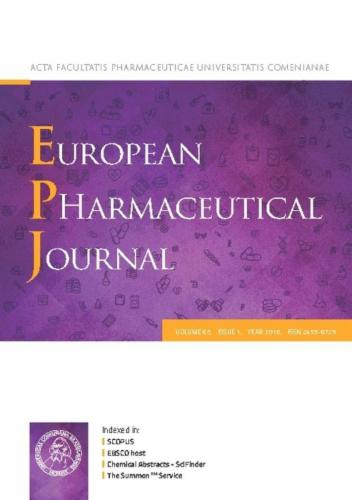Integrating transcriptomics, network analysis, and single-cell RNA sequencing to identify and validate key target genes of gynostemma in the treatment of non-alcoholic fatty liver disease
IF 4.7
3区 医学
Q1 PHARMACOLOGY & PHARMACY
引用次数: 0
Abstract
This study explores the therapeutic targets and mechanisms of Gynostemma pentaphyllum in non-alcoholic fatty liver disease (NAFLD). Using network analysis and bioinformatics, we identified target genes of Gynostemma’s active metabolites in NAFLD through differential expression analysis, Weighted Gene Co-expression Network Analysis (WGCNA), and machine learning algorithms. From the intersection of 2,569 differentially expressed genes (DEGs), 1,279 key modular genes, and 532 target genes, 19 intersecting target genes were pinpointed, with PIM1, TYMS, and SLC29A1 identified as key targets. PIM1 was downregulated in NAFLD samples, while TYMS and SLC29A1 were upregulated. A nomogram based on these genes showed strong diagnostic potential for NAFLD. These genes were enriched in pathways related to spliceosome, lysosome, and purine metabolism. High infiltration levels of activated CD8 T cells, CD56bright natural killer cells, gamma delta T cells, and immature B cells were observed in NAFLD samples, negatively correlated with PIM1 and positively correlated with TYMS and SLC29A1. Single-cell analysis revealed higher PIM1 expression within annotated immune cell clusters. RT-qPCR confirmed that Gynostemma treatment modulated these gene expressions, increasing PIM1 while decreasing TYMS and SLC29A1. In vitro, Gynostemma pentaphyllum reduced lipid accumulation and triglyceride levels in FFA-induced hepatic steatosis models using HepG2, HuH7, and QSG7701 cells. These findings provide scientific insights into the therapeutic mechanisms of Gynostemma in NAFLD.

整合转录组学、网络分析和单细胞RNA测序,鉴定和验证绞股蓝治疗非酒精性脂肪性肝病的关键靶基因。
本研究探讨绞股蓝治疗非酒精性脂肪性肝病(NAFLD)的作用靶点和机制。利用网络分析和生物信息学,我们通过差异表达分析、加权基因共表达网络分析(WGCNA)和机器学习算法,确定了绞绞线在NAFLD中活性代谢物的靶基因。从2569个差异表达基因(DEGs)、1279个关键模块基因和532个靶基因的交集中,确定了19个交叉靶基因,其中PIM1、TYMS和SLC29A1为关键靶点。PIM1在NAFLD中下调,而TYMS和SLC29A1上调。基于这些基因的线图显示了NAFLD的强大诊断潜力。这些基因在剪接体、溶酶体和嘌呤代谢相关的途径中富集。NAFLD样品中活化的CD8 T细胞、CD56bright自然杀伤细胞、γ δ T细胞和未成熟B细胞浸润水平较高,与PIM1呈负相关,与TYMS和SLC29A1呈正相关。单细胞分析显示,在注释的免疫细胞簇中,PIM1表达较高。RT-qPCR证实绞股蓝处理调节了这些基因的表达,增加了PIM1,降低了TYMS和SLC29A1。在体外,绞股蓝可降低ffa诱导的HepG2、HuH7和QSG7701细胞肝脂肪变性模型中的脂质积累和甘油三酯水平。这些发现为绞股蓝治疗NAFLD的机制提供了科学的见解。
本文章由计算机程序翻译,如有差异,请以英文原文为准。
求助全文
约1分钟内获得全文
求助全文
来源期刊
CiteScore
9.60
自引率
2.20%
发文量
248
审稿时长
50 days
期刊介绍:
The journal publishes research articles, review articles and scientific commentaries on all aspects of the pharmaceutical sciences with emphasis on conceptual novelty and scientific quality. The Editors welcome articles in this multidisciplinary field, with a focus on topics relevant for drug discovery and development.
More specifically, the Journal publishes reports on medicinal chemistry, pharmacology, drug absorption and metabolism, pharmacokinetics and pharmacodynamics, pharmaceutical and biomedical analysis, drug delivery (including gene delivery), drug targeting, pharmaceutical technology, pharmaceutical biotechnology and clinical drug evaluation. The journal will typically not give priority to manuscripts focusing primarily on organic synthesis, natural products, adaptation of analytical approaches, or discussions pertaining to drug policy making.
Scientific commentaries and review articles are generally by invitation only or by consent of the Editors. Proceedings of scientific meetings may be published as special issues or supplements to the Journal.

 求助内容:
求助内容: 应助结果提醒方式:
应助结果提醒方式:


